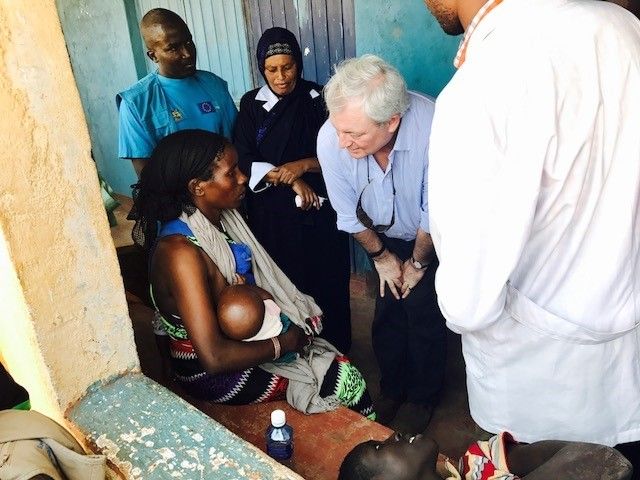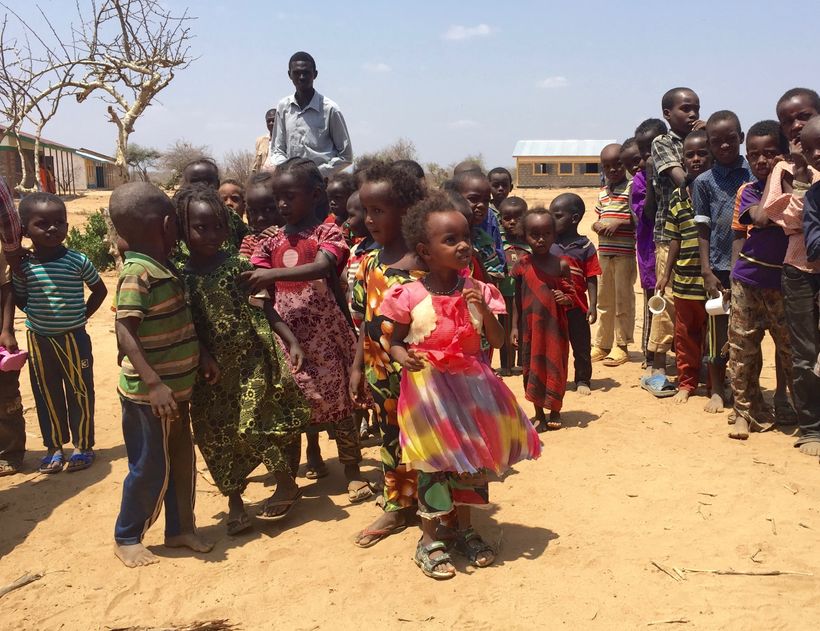* Any views expressed in this opinion piece are those of the author and not of Thomson Reuters Foundation.
Without help, Kenya’s severely food insecure population could surge to 4 million.
After three years of drought and failed harvests, Kenya is in the grip of a national crisis.
All eyes are on neighbouring Somalia and South Sudan – where the needs are indeed greater and more acute – but we must not forget the nearly 3 million Kenyans whose lives have been blighted by these extreme conditions.
Kenya has allocated US$ 128 million towards the national drought response effort, expanded social safety nets, and is working with the international community to mitigate the impacts of the drought on the most vulnerable.
But the US$ 166 million appeal launched by the UN and partners in March 2017 has raised a mere 18 per cent of its funding target, US$ 10.3 million of which from the UN’s own Central Emergency Response Fund (CERF).
If donors don’t step up funding immediately, millions of families in dire need will be left to fend for themselves. Half of all Kenyan counties have been directly affected by the drought.
Governments that respond to humanitarian needs must be rewarded with support, not penalised by an international community that looks the other way. This will only deepen the Horn of Africa’s humanitarian crisis.
Thousands of Kenyans are on the move – escaping thirst, hunger and disease. The number of people facing severe food insecurity – 2.6 million – has tripled in less than a year. Even more have trouble accessing clean water. Children are suffering from acute malnutrition and preventable diseases like diarrhoea, measles and cholera.
Consider this, as many as 19,000 children’s lives are lost each year in Kenya due to malnutrition.
The situation would have been far worse had the Kenyan Government, the Kenyan Red Cross, the private sector, and the humanitarian community not stepped in earlier this year – declaring a national drought disaster and tapping into early warning and emergency preparedness systems, public-private partnerships and social safety nets.
The Kenya Food Security Steering Group have been monitoring food insecurity trends across the country. Its data and analysis helps to alert to growing needs and inform the response, which is coordinated through the National Drought Management Authority.
The Government is financing livestock insurance from private companies to sustain thousands of vulnerable pastoralists whose herds have been decimated by drought.
Supported by Equity Bank, the Kenya Hunger Safety Net Programme (HSNP) oversees cash transfers to thousands of vulnerable residents in the country’s arid northern counties.
Here is a Government that is doing its part, but the rest of the world is not.
Without assistance, Kenya’s severely food insecure population could surge to 4 million during the second quarter of 2017. Thousands more children will drop out of school and more herders will cross borders in search of pastures. Tensions will rise and diseases will spread.
The international community can stop this from happening by getting behind Kenya’s drought response effort, which is so critical to the security and stability of the Horn of Africa.
With US$ 20 million we could stem the spread of cholera and diarrhoea by providing access to clean water and sanitation. An additional US$30 million would finance supplementary feeding for 545,000 children over six months in areas like Turkana, Marsabit and Mandera where global acute malnutrition rates are at double the emergency threshold.
With US$ 166 million, we would enable nearly 3 million people to get through this devastating crisis.
“Sticks in a bundle are unbreakable,” says an African proverb. Let’s put our sticks in a bundle to make Kenya’s drought response – and its communities – unbreakable.
Siddharth Chatterjee is the UN Resident Coordinator to Kenya and Aida Mengistu, Acting Head, OCHA Regional Office for Southern and Eastern Africa



